Three years into its existence, the GKA Kite-Surf World Tour is turning into a grueling surf battle between Airton Cozzolino and Keahi de Aboitiz””each unloading fierce hits in the pocket and unrivaled technical airs. Cabo Verde’s Matchu Lopez, Portugal’s Paulino Pereira and Brazil’s Sebastian Ribeiro are all wildcards capable of an upset and with the podium anything but a given, the best seat in the house belongs to Mallory de la Villemarque. The Tarifa-based Frenchman is perched up in the judging tower, assigning a single numerical value to every wave ridden since the GKA reincarnated competitive kitesurfing. Mallory himself is no stranger to competition; holding multiple freestyle French championships and after a stint on the PKRA, he later earned his bachelors and strapless surf pedigree while attending college in the Hawaiian Islands. Looking back on the state of competitive kitesurfing, Mallory recalls a PKRA wave stop in Matanzas, Chile in 2007. The winner back then was Martin Vari and all the boards had footstraps””the biggest difference between then and now, he says is, “these days the tour actually looks like surfing.” We interviewed Mallory to assess the state of the GKA Kite-Surf World Tour and survey the competitive terrain that lays ahead.
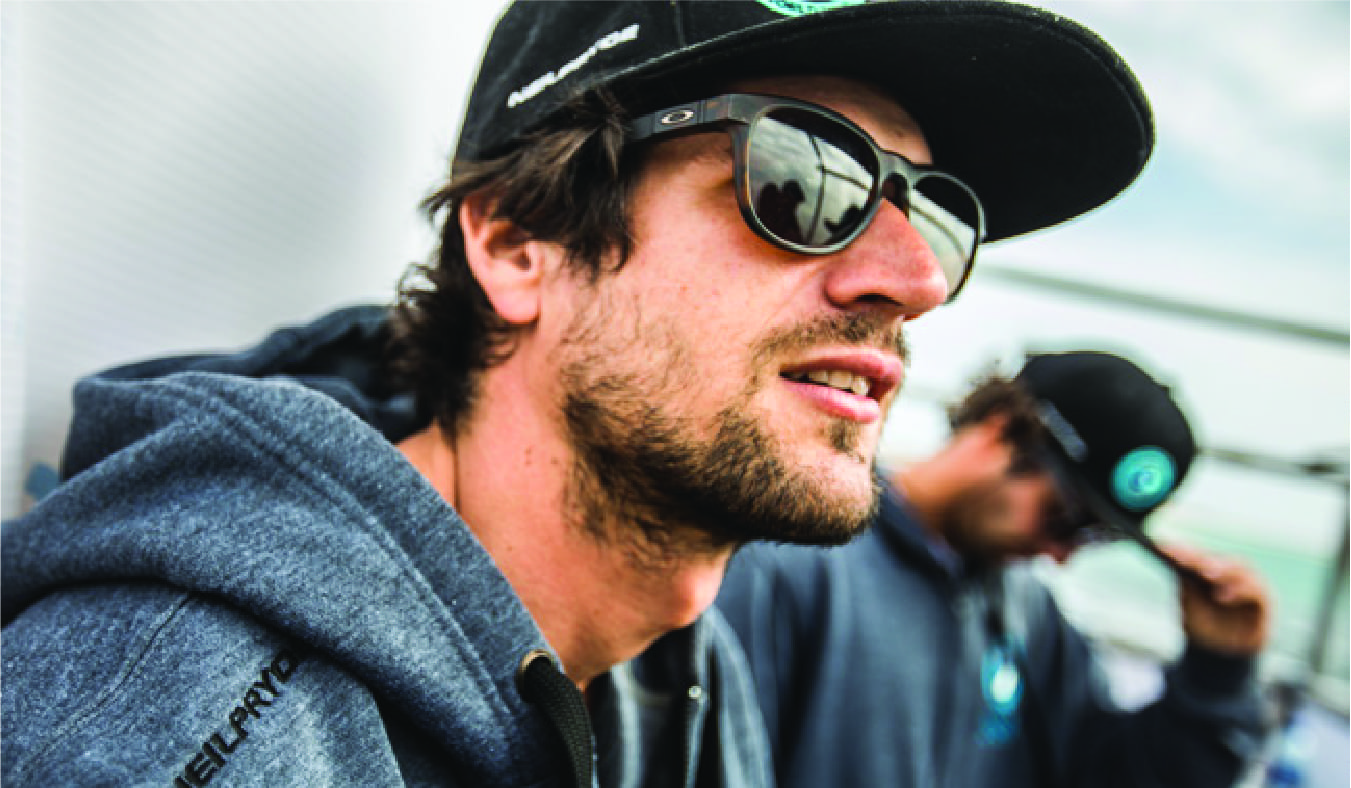
Mallory de la Villemarque has been judging the GKA Wave Tour since its inception and now judges the GKA Freestyle Tour and is also slated for the upcoming Big Air panel.
WHILE THE GKA IS FAR FROM THE FIRST KITESURFING TOUR TO GRACE KITEBOARDING, WHY ARE WE NOW JUST SEEING LEGITIMATE ATHLETES FROM THE MAINSTREAM SURFING WORLD CROSSING OVER INTO KITESURFING?
Sebastian Ribeiro is a great example of an athlete that has come to the tour from a professional surf background””actually, there are a number of really talented Brazilians coming into the sport, but the difference in style you see in dedicated surfers is definitely there. If you watch Sebastian you’ll notice a particular way in which he links the sections of a wave; the board is never flat, there’s not a second of waiting or hesitation””he’s always working the wave, always turning. If you watch some of the strapless freestyle guys on a wave, you’ll see one turn, then the board goes flat before setting up the next hit, but the kiters with surf backgrounds are rail-to-rail with aggressive turns in the lip and always finding the critical sections. Typically, they have a ton of speed and they don’t use the kite when it comes to turning; it’s as if their kite is not connected to them, yet they use the kite to accelerate past sections and line up the next hit. For the crossover surfers, sometimes if you just remove the kite in your mind, it’s almost as if you are watching pure surfing. Kitesurfing these days really compliments surfing””if it’s perfectly glassy you surf and if the wind picks up your kite. The side-shore conditions you wouldn’t want to surf can be a blast with a kite. There’s more surfers coming into kitesurfing in general, and there’s some WSL guys, like Caio Ibelli from Brazil that compete on the surf tour but also kite, and there’s guys like Stephan Figueiredo and Grant ”˜Twiggy’ Baker that charge Pipe but also kite Mokuleia. So, it’s really just starting and there’s no doubt the latest additions to the tour make kitesurfing look more like high-performance surfing; this in itself will attract more people from the surf scene.
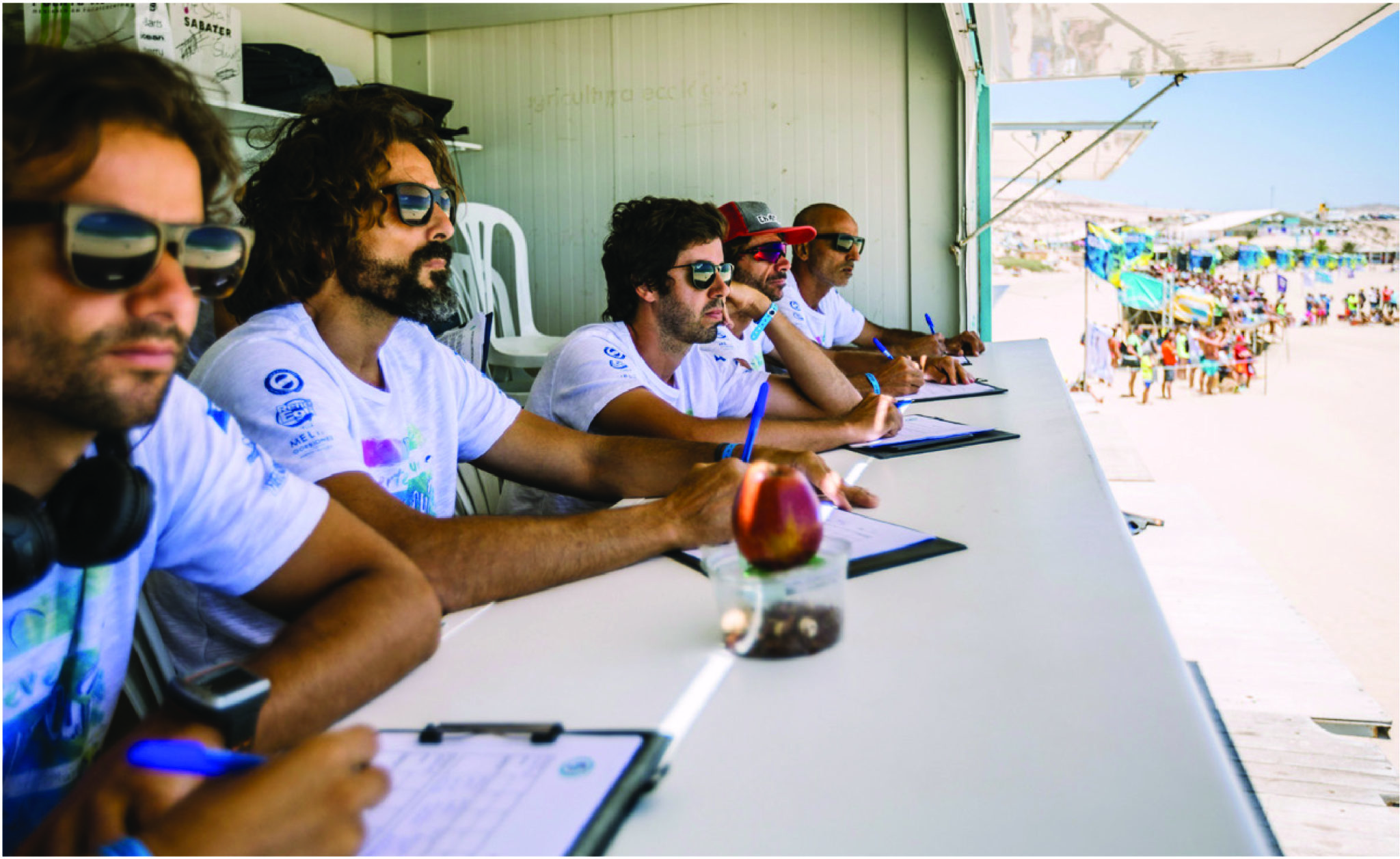
The judging criteria for the surf tour is a work in process; every year the criteria gets tweaked based on the concept of fairness and the progression of athletes.
WHILE LONGSTANDING KITESURFERS LIKE KEAHI AND AIRTON SEEM TO HAVE THE UPPER HAND OVER THE NEW BREED OF SURFER CROSSOVERS, HOW DO THEIR STYLES AND APPROACH DIFFER? WHAT KEEPS KEAHI AND AIRTON ON TOP OF THE PODIUM AT EACH STOP?
You can see Airton and Keahi come from a kiting background; you can see it in their consistency, but surfers like Sebastian Ribeiro and Filippe Ferreira are a little behind but learning quick. Airton is super aggressive overall and attacks the lip so hard with so much speed. Keahi is known for his flow””he makes everything look so easy and smooth yet he destroys the wave while fitting in 10 turns. At the first event of this season, Airton started doing these massive windsurf-style airs with a board grab that we’ve never seen before. Both Airton and Keahi really understand how to use the power of the kite in riding waves. The GKA is looking for the most complete riders and right now it’s guys like Airton and Keahi that can do everything.
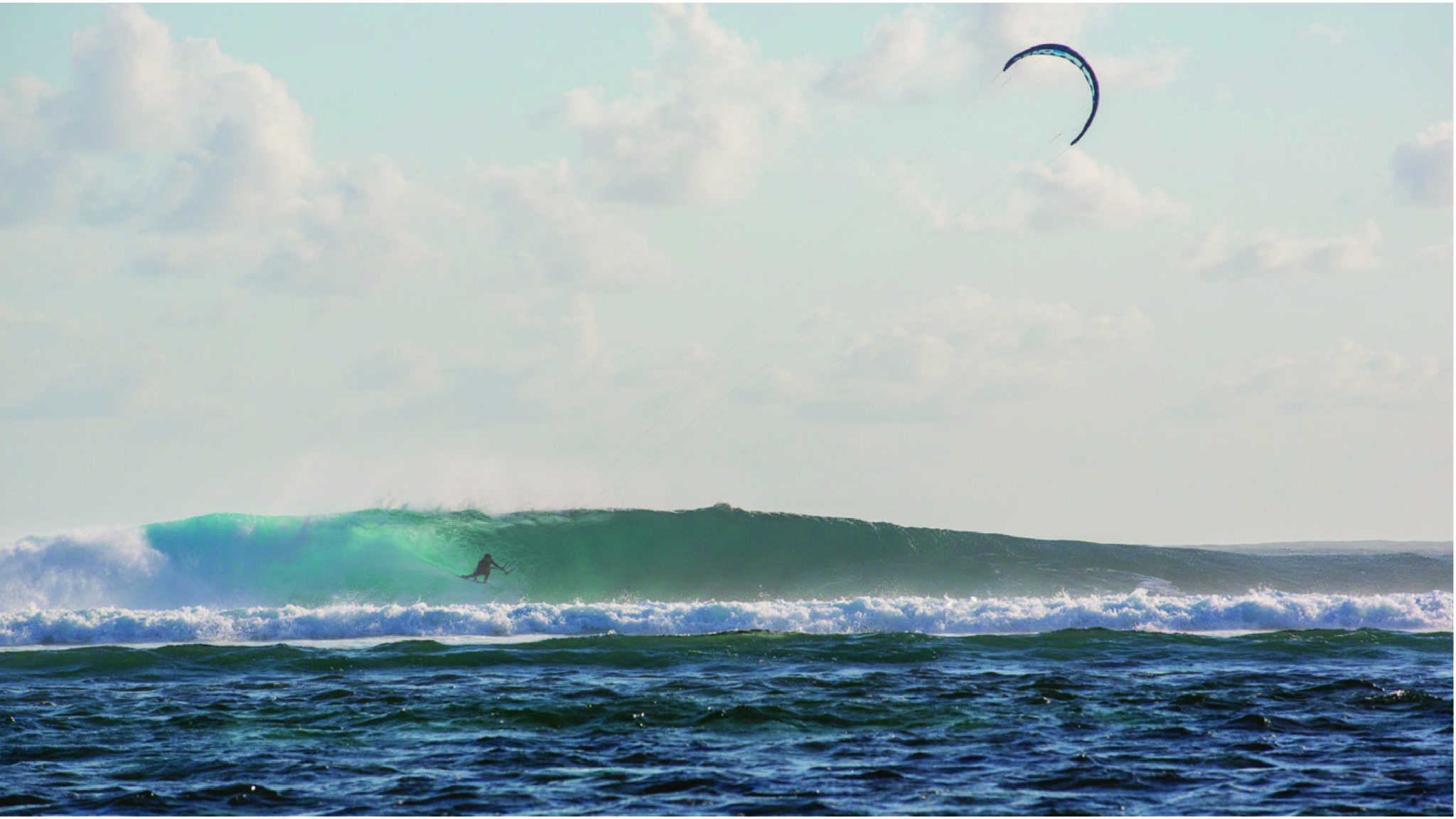
Sebastian Ribeiro grabs rail at One Eye in Mauritius. // Photo Toby Bromwich
HOW DOES GKA JUDGING WORK AND HOW DO YOU MAINTAIN OBJECTIVITY?
Judging is constantly changing; it’s an ongoing discussion because we are learning at every event. We have five judges from different nationalities””some judges come from surfing and some come from strapless freestyle backgrounds; it’s good to have different visions as this makes everything more complimentary. Standards are changing. Back in the day there was this obsession with not using the kite, but today this is not the case. It depends on the conditions; sometimes athletes really use the kite and other times they’re just making use of the speed of the wave and the board while hitting the lip. Some judges are looking for pure surf and others are stoked to see technical airs in the waves. It’s all new, because now we’re seeing new airs and back rolls off the lips, but the question is how to score these for style. At the last event, I remember a conversation with fellow judge, Fadi Issa. He was a professional windsurfer and kiteboarder in Maui, but these days he lives in Fuerteventura. Fadi stressed the importance of landing an air on the front of the wave because that’s more critical, and that sparked the debate on whether landing an air on the back of the wave would be scored””we have to draw thin lines and that is constantly evolving. This year we’ve also changed how we score each wave; the judges with the low and high score for each wave get tossed. This hopefully rules out the judging bias””making it difficult even if a judge wants to help a rider.
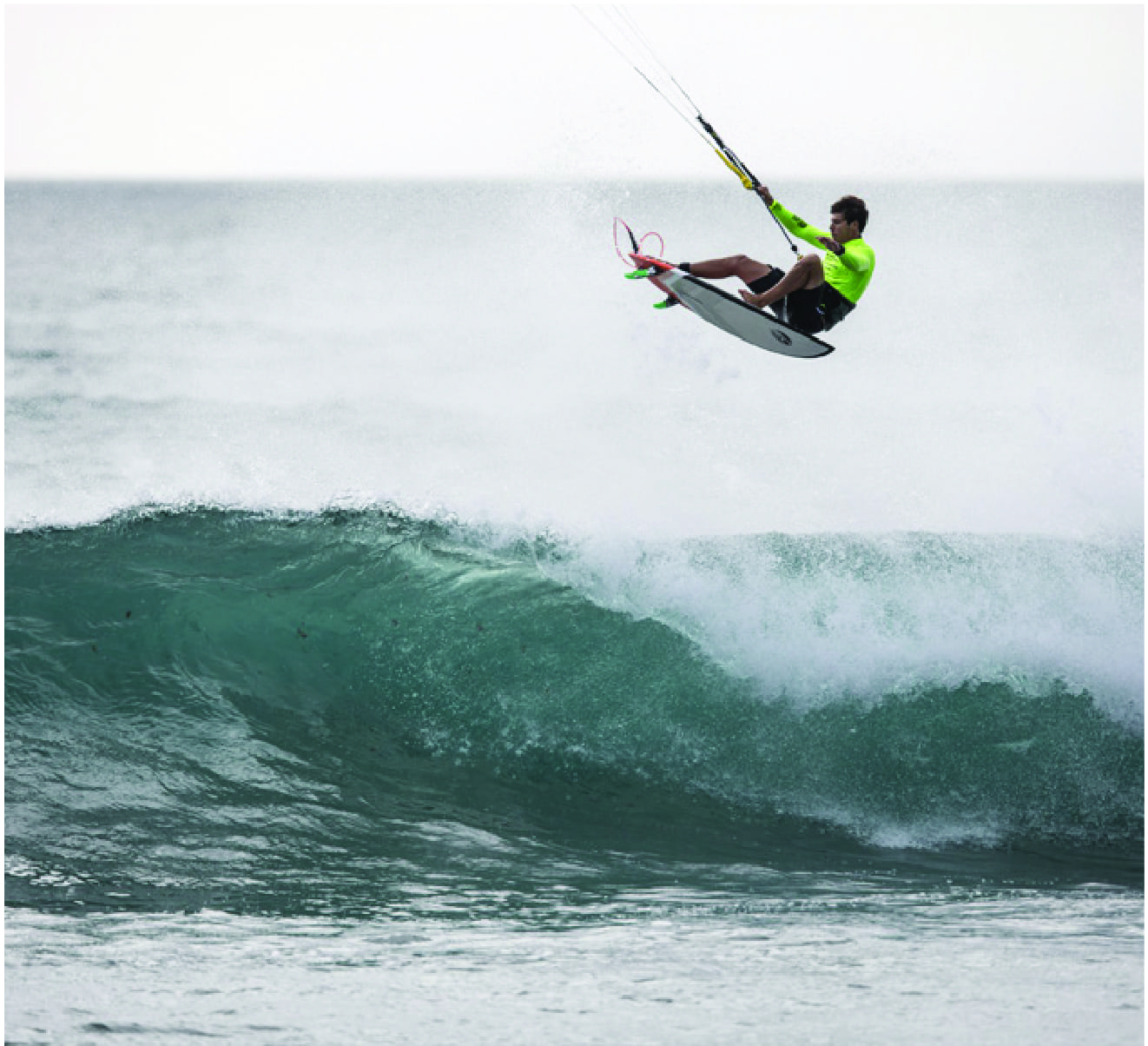
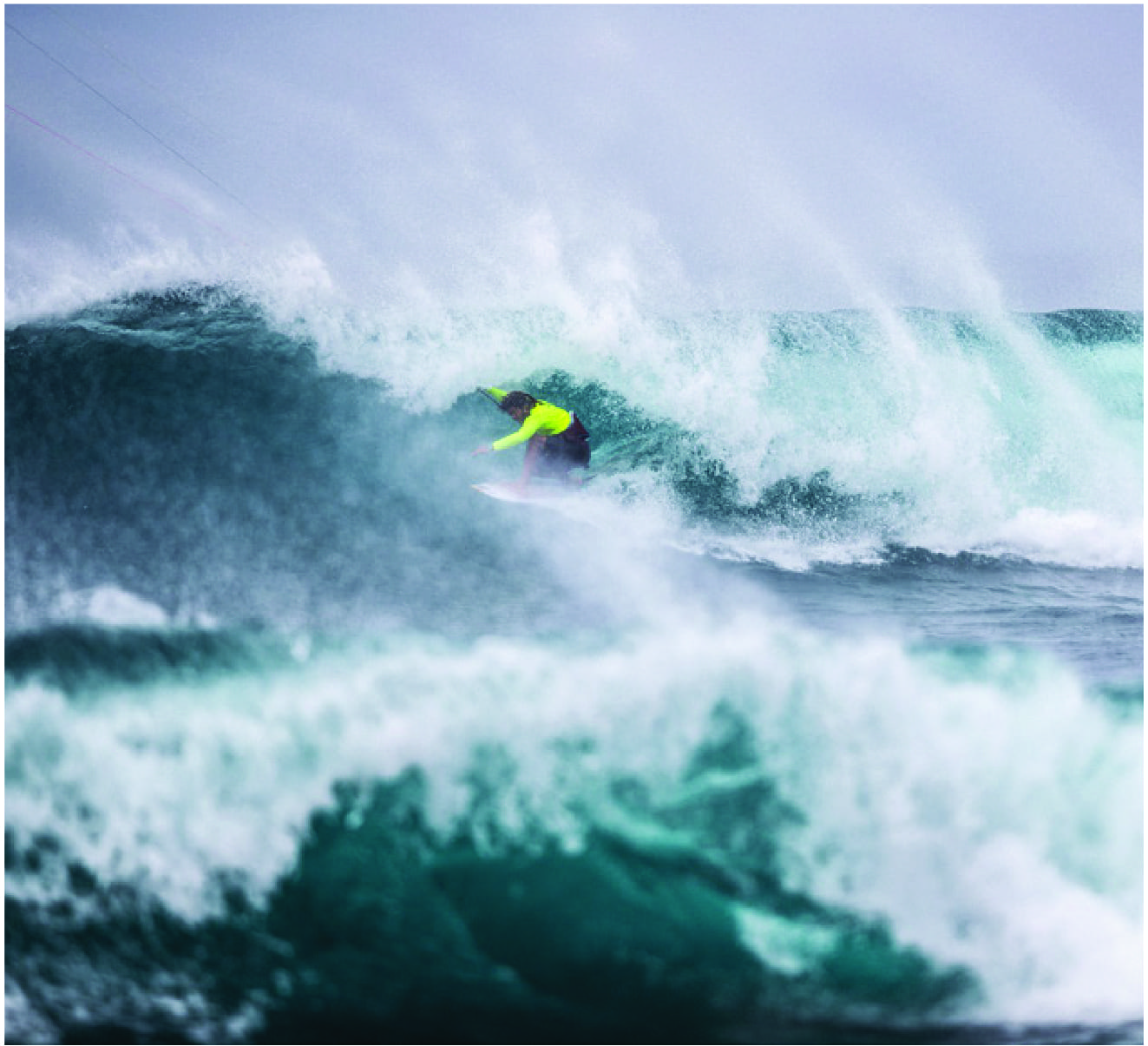
KITESURFING HAS HAD A LONG HISTORY WITH UNSUCCESSFUL WAVE TOURS. WHAT ROLE DOES SPECTATING PLAY IN THE FEASIBILITY OF THE TOUR AND WHAT ARE THE ECONOMICS BEHIND SITE SELECTION?
It really depends on the location; take a stop like Mauritius””the wave is far offshore and for spectators it is useless, so the organizers struggle because it is not easy to put on an event in Mauritius. But then you have a stop like Cabo Verde where Mitu Monteiro and his business partner Djo Silva organized the entire thing by themselves on top of competing on the tour. It was the first time for this spot, but it looks like we will have it for another year because in this location, the government put up the bulk of the money and seemed to be very happy with the results. There, you have the wave five meters from the beach and the spot is packed with crowds cheering for locals. Then there’s a location like Dakhla where there is no one on the beach. The organizers from Dakhla rely entirely on government money to host the event. You’ll see the local governor drop in for some photos and a brief showing, but after that, there’s few people coming to watch. But if you come to Tarifa, the beach is completely packed.
The reality is that the wave tour is limited to maybe 10 to 20 spots that are possible options. It takes money to put on an event and most of the time event organizers rely on tourism money from the government, yet in some places the money comes from all private sponsors and sometimes it’s half and half. We have events hosted by passionate kiteboarders that want an event in their home spot. They do the best they can and maybe it’s not the most professional event, but then again you have an organizer, like the one we have in Germany, who puts on a massive event with corporate sponsors. The location may not be the best, but it’s good for the industry because it’s near a huge market of kiteboarders. But, the one thing we need to be careful of is to not kill the competition by only going to places where there is money.
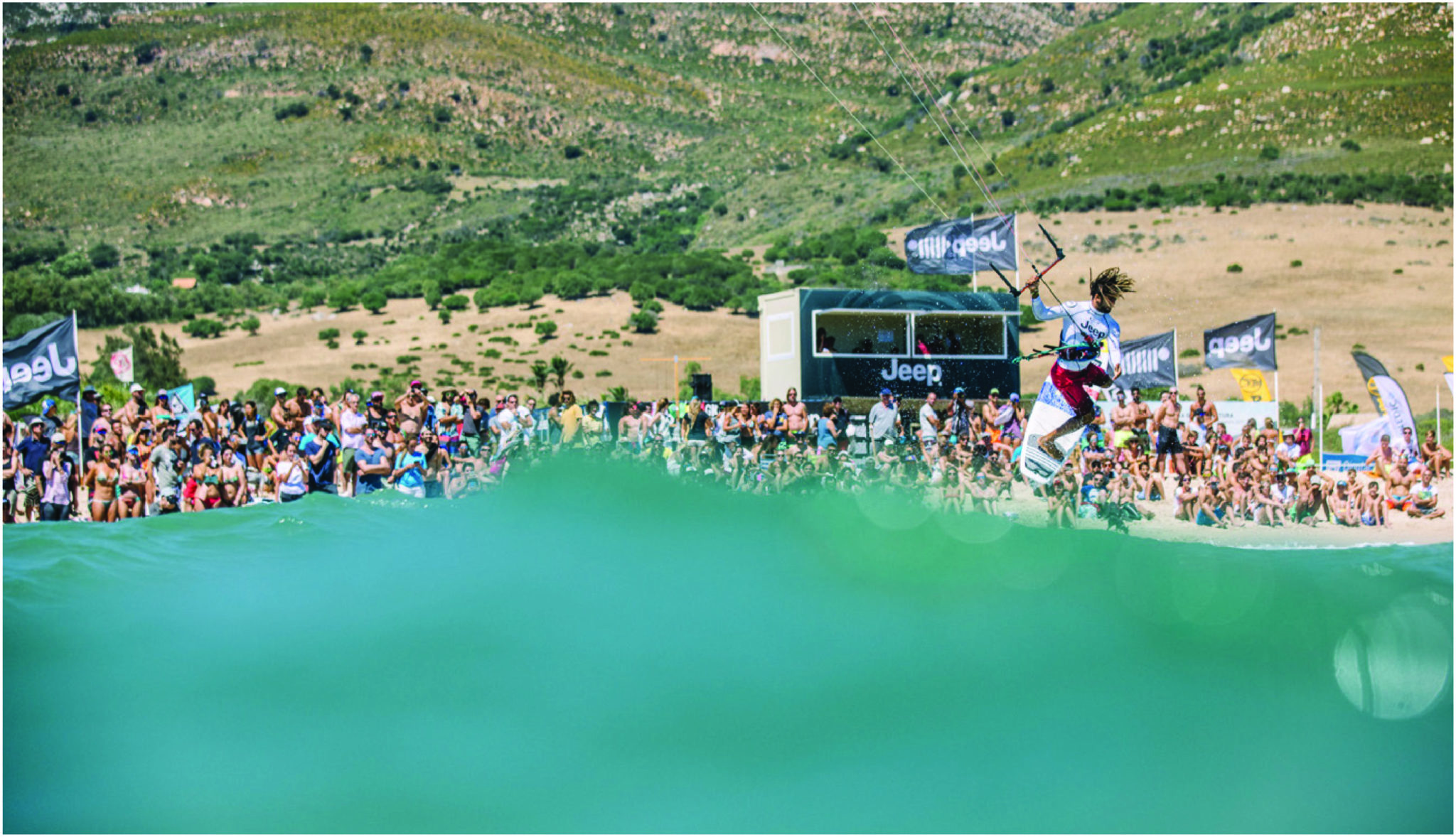
Airton Cozzolino busts a strapless front roll for the massive crowd of spectators in Tarifa, Spain.
SITE SELECTION IN TERMS OF WAVE QUALITY HAS ALWAYS BEEN THE THORN IN KITESURFING TOURS THAT PITS RIDERS AGAINST ORGANIZERS. SINCE THE GKA WAVE TOUR IS A STRAPLESS FREESTYLE TOUR AS WELL, HOW DO YOU BALANCE THE INTERESTS OF THE VARIOUS ATHLETES WHILE MAINTAINING THE SUSTAINABILITY OF THE TOUR?
Right now we have a really good symbiosis between the riders and the tour staff. There’s quite a lot of meetings and the events have a really cool vibe which I hope will last for many years. If you recall the KSP tour from a couple of years ago, it tried to put stops only at locations that offered pure, perfect dream-like kitesurfing conditions””but financially, at some point, it wasn’t viable, at least that’s what I heard. Going for only the perfect surf destination makes it more complicated. Sure the GKA goes to spots that aren’t perfect and riders will talk trash; you will always have these people, but overall the spirit is great and the riders understand the importance of going to places that aren’t pure surf. We’d love to only go to places like Mauritius, Hawaii or maybe somewhere like South Africa, but the reality is that there’s not so many organizers capable of bringing these kinds of events to those locations. Now that we have the strapless freestyle scene this opens doors to more locations that can support a stop. Take Dakhla””we didn’t have great conditions last year so we combined 70% of the wave score, and for the time in between sets, we scored 30% for freestyle when it was flat. When the waves are average the athletes can throw some tricks, say a front roll off a wave, and when a solid set comes they can surf. We will always have pure wave riding locations but we can also have more average spots that will open doors to new tour stops that keep the tour going. Some people are going to criticize this platform, but the GKA organization wants to see the sport grow, reach more people and go to new places.
The reality is that regular surfing contests are easier””they only need waves””but we need wind and waves, which makes it much more complicated.
I think the perfect kitesurfing tour would offer at least two pure wave events with wind from both directions (this is very important for both goofy and regular-footed riders), but we also need two pure strapless freestyle events. At the beginning I was a bit of a skeptic; I knew some riders would only come if it were a pure wave event, like Hawaiian charger Patri Mclaughlin, or California’s Patrick Rebstock or Ian Alldredge, yet a core surfer like Sebastian Ribeiro showed up and is now doing the freestyle as well. The current format is opening doors and helping athletes become more versatile and more complete riders. Maybe when we have enough events and riders we can have two disciplines, with a pure wave world champ and strapless champ, but for now it’s not possible””it’s too early””we are limited with riders and event organizers, but maybe one day.
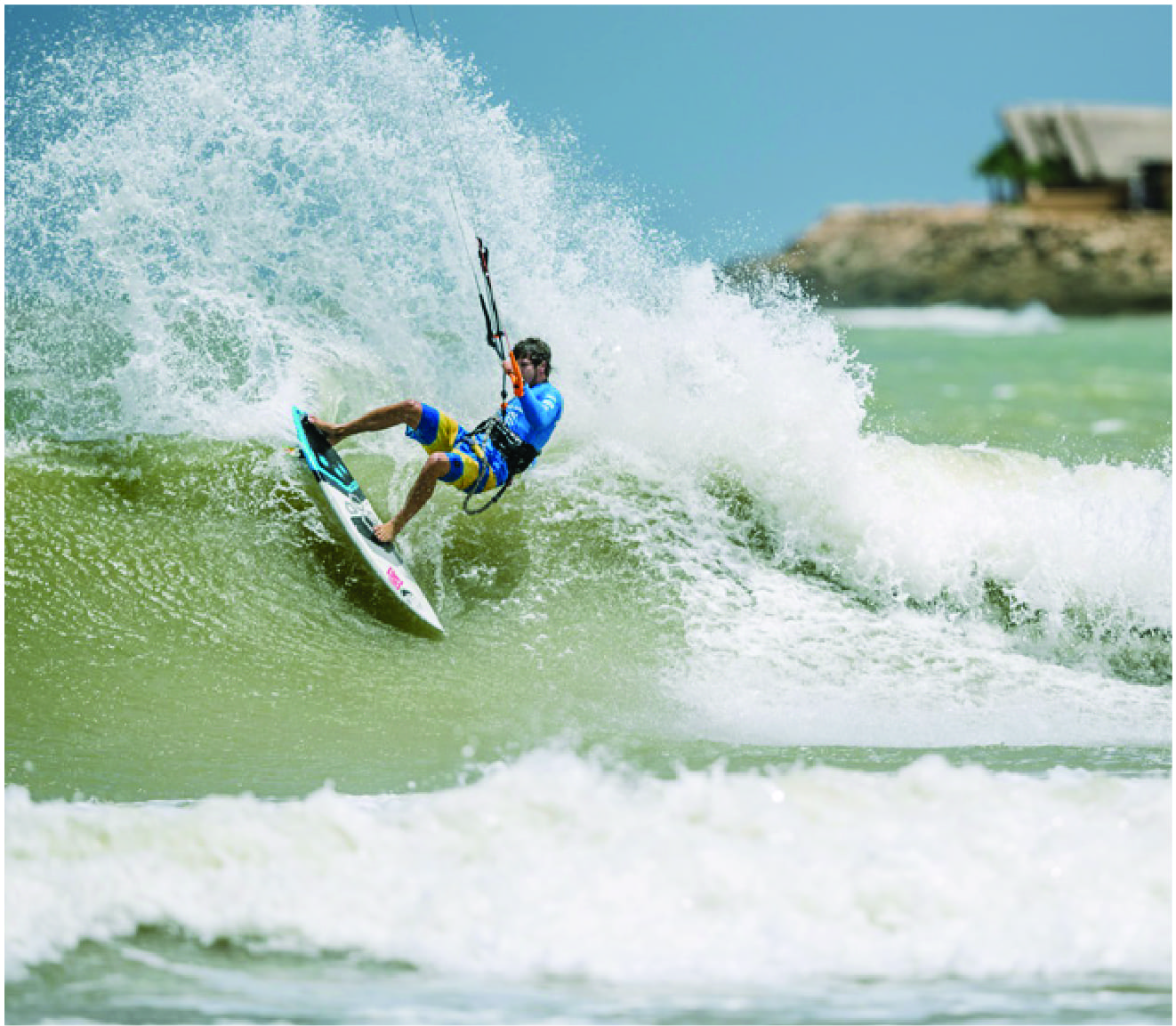
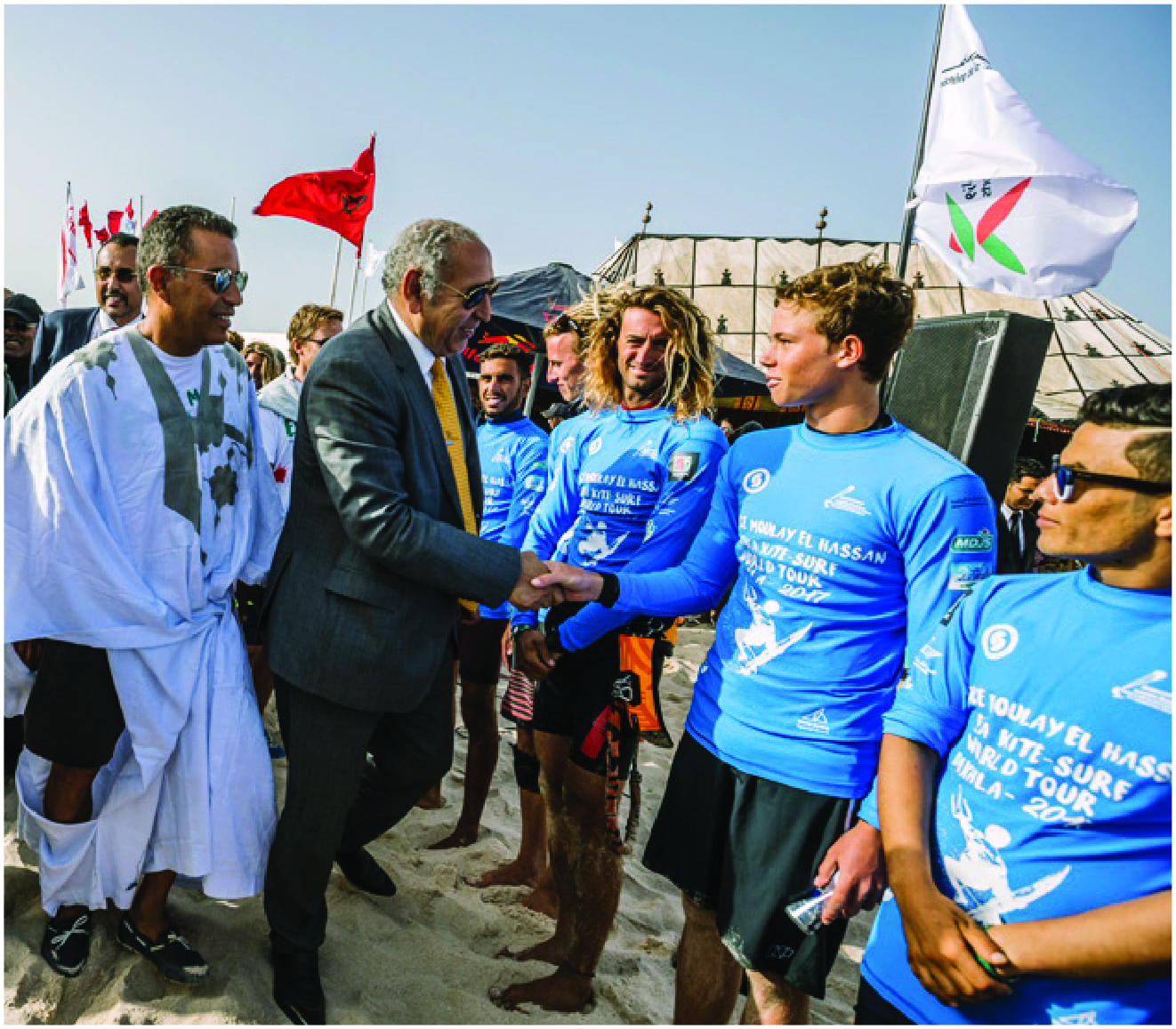
THE GKA EVENTS ARE CURRENTLY USING VIDEO RECAPS PUSHED OUT AFTER THE DAY’S HEATS WHILE THE WKL (WORLD KITEBOARDING LEAGUE) HAS BEEN PUSHING LIVESTREAMING. WHAT’S THE IMPORTANCE OF LIVESTREAMING IN THE LONGEVITY OF A TOUR?
You don’t see livestreaming in the GKA events for the simple fact that it is already expensive for an organizer to put together an event without livestream. It could be $30-40K for a proper livestream. The WKL’s freestyle tour has a great livestream, but that tour is struggling this year to organize more events because the livestream requirement makes it really expensive. If millions of people were following kiteboarding then we’d have Samsung sponsoring our livestream, like with surfing. Supporting a team of cameras and producers makes it complicated and the sport is just too young. Some organizers with bigger budgets like Germany could pull it off, but it hasn’t been a priority for the GKA. The GKA started as a grassroots tour, learning from the mistakes of other tours, and so far, video recaps from each day seems to be the better way to go. There’s people on the internet that are critical of that decision but we’ve seen previous tours struggle because of an obsession with livestream.
While kitesurfing is at a point where it is starting to really grow, the GKA is still at a point in between. Looking back at the PKRA, it had a livestream that was a one man show and the filming was shaky but probably fairly inexpensive. The WKL has a great livestream that gives a good image of the sport and makes a professional product out of the freestyle tour, but who is going to pay for that when your view count is only around a thousand? A big sponsor is going to laugh at those numbers. Maybe there’s a quality level we can find in between, a livestream option that is more affordable, maybe one that can be sponsored by the industry.


WHY DOESN’T THE GKA HAVE A TOUR STOP IN NORTH AMERICA AND WHY DO YOU THINK THERE ARE NO AMERICANS ON THE TOUR?
Well we’ve seen Matt Elsasser come to a stop as well as Evan Netsch from the East Coast and even Reo Stevens from Hawaii, but Keahi is really the only consistent rider from North America on tour (Tkb points out that Keahi is listed as an Australian rider). Right, but he represents Australia and Hawaii (shared laugh). Kiteboarding competition just hasn’t thrived in North America the way it does here in Europe. We have the same mainstream sports; soccer is the same to your football/basketball, Formula One is your NASCAR, but for some reason our governments and corporate sponsors are more willing to help smaller sports like kiteboarding pull off events than they are in the US. The GKA doesn’t want to be just a European association, we want to be a part of the whole kite scene. Just recently there’s been talk of a stop in the states, I think the Gorge would be an amazing venue for strapless freestyle. Sure a stop on the California coast would be awesome, like Santa Cruz, but you’ve got to start somewhere.
This article first appeared in Tkb’s spring 2018 issue. Want more like this? Subscribe here: https://www.thekiteboarder.com/product/magazine-subscription/


